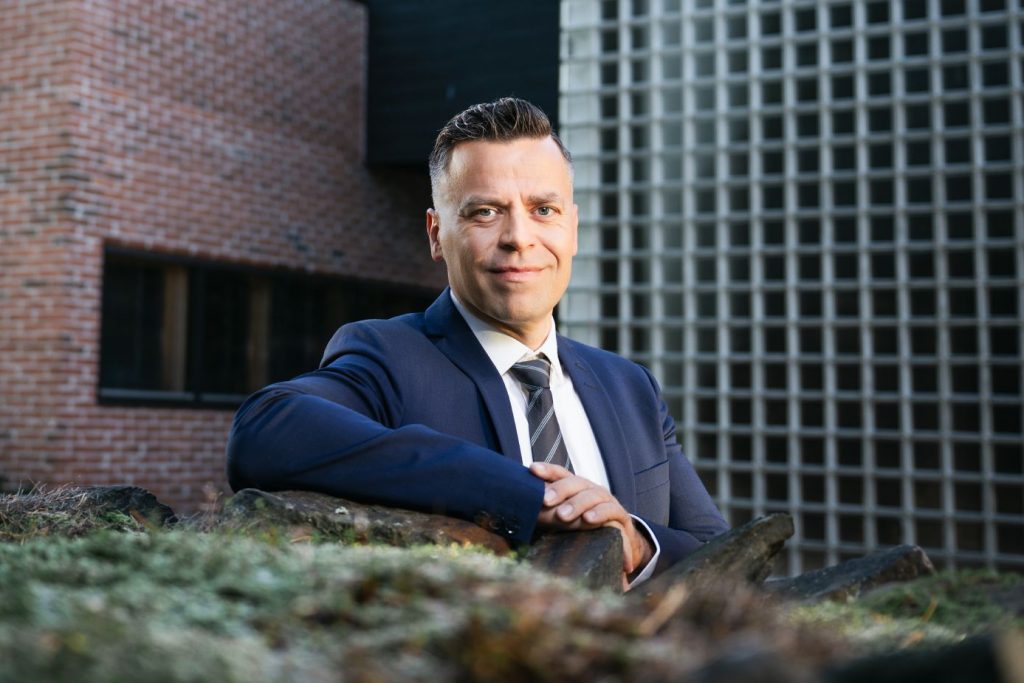Resilience as a Deterrence Strategy: Towards a Comprehensive Security Panorama

Ten years ago we organised the Association of Borderland Studies’ first ever World Conference in Joensuu, and in St. Petersburg, Russia.
Those were very different times. The world we are living in has changed profoundly since then. This also means that much of the knowledge was produced in a world that no longer exist; it does not necessarily apply anymore.
The theme of the 2014 world conference was “Post-Cold War Borders” – today, we see a new cold war between the West and the East. But the prevalent security landscape is much more complex than what this conventional binary tends to suggest.
In 2014, we could already see that optimistic visions of the preceding years had begun to crumble. Russian illegal annexation of the Crimean Peninsula called into question the principles of the pan-European security architecture:
- refraining from the threat or use of force
- respect for the territorial integrity of states, and
- the inviolability of borders.
Instead of security based on cooperation, friendly relations, and openness – the 1975 “Helsinki Principles” – the return to power politics was becoming increasingly evident.
In my opening speech then, a decade ago, I stated:
“As verified by recent developments in Ukraine, the issue of borders, their functions and changing significance and symbolism presently looms larger than at any time since the end of the Cold War. The commonplace of global de-bordering, supported by optimistic notions of globalization and a new post-Cold War world order, has been succumbed to the reality of increasing complexity and instability in the world system. We can recognize global megatrends that are changing the nature of borders while, at the same time, there are obviously different regional responses and counter tendencies to these trends that we need to pay attention in our work”
Now, in 2024, we are here today largely because the 24th of February 2022 marked the beginning of a new dreadful war and the return of military conflicts to Europe. The Russian war against Ukraine can be seen as a turning point in future history books, with far-reaching consequences.
Under President Vladimir Putin’s leadership, Russia has invaded two of its neighbours, Georgia and Ukraine, illegally annexing territory from both those states, to hinder their aligning with NATO and the West. Alongside its war in Ukraine, Russia’s hybrid threat activities have increased and become increasingly felt in its neighbouring counties as well as within the entire NATO alliance.
These developments, together with deteriorated relations, have raised ever increasing concerns about the preservation of security. Russia uses a wide spectrum of hybrid threat tools, ranging from the domains of culture and diplomacy to intelligence, information, instrumentalization of migration, strategic coercion, and the military. Many of these pose a challenge that cannot simply be fenced away. In a world beyond control, bordering the uncontrollable seems both inefficient and counterproductive. A comprehensive approach to security is thus needed.
Perhaps most fundamentally, the security and operating environment has changed here in Finland, a concrete manifestation of which was the swift decision to apply for NATO membership on 17 May 2022. Once all NATO members had ratified Finland’s Accession Protocol, Finland became a member of NATO on 4 April 2023, having completed the fastest accession process in the organisation’s history – and overturning the country’s longstanding policy of military non-alignment.
The NATO membership is expected to strengthen Finland’s security in the changed security environment and improve stability and security in the Baltic Sea region and Northern Europe. Yet it is expected that Finland’s strong defence capabilities and comprehensive security approach will in turn strengthen NATO and the collective defence of the Alliance.
In the context of rising tensions and the return of war to Europe, the 2022 NATO Strategic Concept affirmed the strength and unity of NATO and asserted the alliance’s new and enduring objectives. These included the identification of Russia as “the most significant and direct” threat to the alliance and a new emphasis on building resilience in bolstering deterrence and defence.
Within the present context, it has become increasingly difficult to conceive security in terms of national sovereignty alone or in traditional national security vocabularies that are based on strict inside/outside divides. It is therefore more and more urgent to better understand drivers of security that operate at many different levels within society and internationally. Increasing awareness of hybrid warfare, Russian deception-centric thinking, and appropriate countermeasures are essential for tomorrow’s decision-makers, strategic leaders, state authorities, scholars and the citizens alike.
Security is more than physical protection: without a sense of well-being, security cannot be sustainable. The problem we are addressing exists in at least two different arenas of political action. At the level of main actors, it is important to know how to properly link security-relevant decisions taken by the European Union, member states and international organisations such as NATO and the United Nations. At the more general level of society, it is quite evident that security is not only about security policy in the strict sense or the role of armed forces but also an issue of the general public’s perception and feelings. Security is not mere threats but also possibilities and new horizons that physical safety and predictability may open. It is precisely the “soft” and fuzzy area of security that is the most vulnerable to misinformation and manipulation. The accentuation of perceived difference between people, cultures and states increases within contexts of socio-economic stress and geopolitical instability. The everyday sense of security can be politically decisive, as we have clearly seen recently. Our societies have become increasingly internally torn – a security challenge in itself.
The specific focus of our work here at the Karelian Institute of the University of Eastern Finland has been on the interwoven nature of external and internal security that we approach through the prism of borders. Borders are an interface between domestic concerns, and wider interstate and intercultural contexts that have a fundamental impact on security of the Finnish society at various levels. The state of the art that has been achieved in border studies reminds us that the realities of territorial borders extend into many realms of everyday life. Far from merely linear and static, state borders are actively appropriated through vast repertoires of political, cultural and social practices.
The current era of overlapping, constant crises, with various elements of uncertainty they create, has underlined the role borders play in the constitution of difference and bringing order amidst perceived dangers of chaos. A strong state is being offered and broadly accepted as a solution to the perceived chaos, simplistic politics as a cure for the complexities it has cultivated. We have witnessed a thickening of the international demarcation in the name of “national security”, construction of borders as protective yet vulnerable de/fences against the various “ills” seeking to infiltrate and paralyse the very body of our “national” societies, producing the sense of security, stability, and order amidst paralysing anxieties.
Borders, that is, provide reassurance that the ’we’ and the here are still physically distanced from and protected against the perceived threats.
Borderlands, then, can be taken as illuminating laboratories to study broader socio-political change, prone to the vicissitudes of the prevailing geopolitical contexts. Around the globe, borderlands have been undergoing considerable transitions. We have witnessed a consistent drive for ever-stricter border and migration policies that have not only changed the role that borders play but have become inherent parts of a wide range of polices and societal practices. Indeed, despite many appealing aspirations to the contrary, political borders have proven their persistence.
Rather than mere independent variables in the analysis of political processes, borders are co-constitutive of political agency: borders are not given but emerge through socio-political and cultural bordering processes that take place within society.
Resilience has gained momentum as a policy concept focusing on a highly diverse set of issues. It has become a trendy buzzword circulating across academic, political, activist, social media and other circles. The popularity of this concept can be understood as a response to challenges and “wicked problems” that in these uncertain times seem to dominate everyday life. Related research has proliferated in various fields and disciplines.
Resilience thinking holds great potential. There is, however, a need to conceptualize resilience not merely as an ability to recover and bounce back as quickly as possible after disturbance, but rather as an ability to adapt, acquire new capabilities and emerge stronger from the struggle. Resilience is not about securing oneself from danger, pre-emption or precaution, but about adaptive risk management.
Resilience is not, however, a universal silver bullet for a complex set of challenges or threats, nor is its capacity to deliver security irrefutable. Resilience is not a straightforward concept that offers ready-made solutions to societal challenges. Resilience requires that we work with our uncertainties and recognise the changing nature of the world. Thinking in terms of social resilience potentially situates us as navigators and attenuators of difference either real, imagined or manufactured.
Resilience thinking underlines a comprehensive understanding of security in positing an entire system’s capacity to spontaneously reorganize itself in response to disturbance, adapt and transform. Whereas politics is commonly reduced to responding to and managing what is understood as consequences of previous human actions. Assuming a transformative resilience-oriented approach can be regarded as a depoliticizing effort, because conditions of responsiveness, adaptability, inventiveness and flexibility are required to survive and prosper within a catastrophic horizon.
A resilient world is a world of becoming. It necessitates the transcending of boundaries and the binaries of which they are markers.
This blog text is edited from the opening speech of Advanced Research Workshop supported by the NATO Science for Peace and Security Programme, held in Joensuu 1-3 October 2024. The workshop was organised with the support from the NATO Science for Peace and Security Programme, University of Eastern Finland, the Karelian Institute, the Borders, Mobilities and Cultural Encounters Research Community (BOMOCULT), the University of Joensuu Foundation, and the City of Joensuu.
